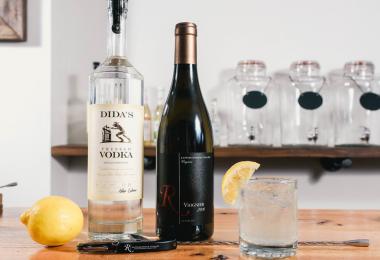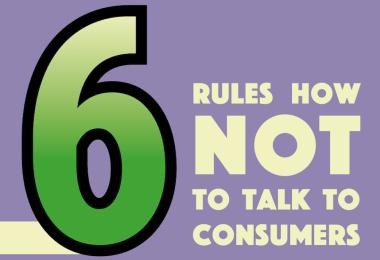Over the last three dozen or so years, as a wine critic, and also after chairing well over 100 wine competitions and tastings across the world, I must have consciously tasted and assessed at least 20,000 wines without knowing who made them, Maybe a lot more.
How would that compare with the experience of the average wine drinker? How many people who picked up a bottle or two in their local supermarket last weekend, or opened a carton from their favourite wine merchant, ever sniff, sip and pause to think about a wine whose identity has been deliberately concealed from them?
Setting aside keen wine enthusiasts and the people who have signed up for a wine course, I’d guess that the only time anyone wraps a few bottles in paper or aluminium foil is when they have to place a substantial order for a special event such as a wedding reception. And even then, the chances are that they won’t be comparing more than a handful of wines.
Before saying anything else, I’d like to emphasise that I’m a long-term fan of blind tasting, and still believe that it’s the best way for a professional to assess the quality of a wine against its peers. If I didn’t, I could hardly continue to be a member of the board of a competition like Mundus Vini and a chairman of 5 Star Wines in Verona.
But I still wonder sometimes whether the tail isn’t too often allowed to wag the dog. Which other sector’s critics are so eager to separate the product from its packaging and the identity of its producer? Theatre and movie critics know the names of the actors and almost everyone else who’s been involved in the creation of the works they are paid to judge. Restaurant reviewers aren’t seated in featureless rooms and asked to sample anonymous dishes of food, and literary critics are usually fully aware of the identity of the authors whose books they are reviewing.
These thoughts all occurred to me when looking at some 2017 research sent to me by Tom Lewis who, when not posting as ‘Cambridge Wine Blogger’, works in advertising. The work was done in the UK by the research organisation Behaviour Architects and described in a blog by Thinkbox.tv and sought to analyse the relationship consumers have with brands. A number of British consumers were asked to try out neutrally packaged alternatives to FMCG products such as shampoo, clothes conditioner, tea, ketchup and mineral water. The participants assumed they were being asked to test something new and unfamiliar; in fact, the products were identical to the ones they knew and liked. The report on the study included a film clip of the Lenor fabric conditioner, for example, being secretly decanted by the researchers into a plain container.
The results were fascinating, if not all that surprising. As Thinkbox reported, “There was no enthusiasm for the task – in fact some found the prospect quite distressing.” One woman was quite dubious about the unlabelled bottles of Evian she had been given and wondered “what was in it”. Once they had the chance to try the products “Virtually all of the respondents felt the substitutes were inferior in quality in spite of the fact they were exactly the same.”
Strikingly, one woman was convinced that clothes washed in the unlabelled Lenor had no smell, while another complained that the unbranded Yorkshire tea bags lacked strength. Without its packaging, Head & Shoulders shampoo didn’t leave the user’s hair feeling as ‘squeaky clean’.
The emotional relationship people have with brands was illustrated by the participant who said that ketchup “has to be Heinz” because that was the brand her grandparents used to buy. Another spoke of the memories of home and family that were associated with PG Tips tea. My favourite of the video clips was of the nearly bald middle-aged man who still used the shampoo on which he’d relied as a long-haired young musician.
The best proof of the power of a strong brand can be seen in a Lidl store. Literally 99 percent of the products are sold under the discounter’s own brand, but their customers still want Heinz ketchup and Head & Shoulders.
Wine people – including professionals – are no different. When the owner of a distinguished port house served a mature Portuguese red followed by a decanter of top-flight cru classé Médoc to guests working for a British merchant, they all enthused about the Dão, while acknowledging the finer complexity of the claret. As you’ll have guessed, the mischievous host had swapped the wines. If you have never been fooled – or fooled yourself - in this way, you’re either a phenomenal taster, or lucky. I certainly have. Lots of times.
When marketers talk about the need for every product to have a ‘story’ they often overlook the shorthand narratives people write for themselves in their own heads. This is the wine we drank on holiday. That was my dad’s favourite. Isn’t this the one your favourite actor has something to do with?
Restaurant reviewers don’t sample the dishes in neutral environments because they know that the quality of the food or even its value is not necessarily of paramount importance to the paying customers. As surveys regularly demonstrate, these criteria may rank beneath service, ambience and location on diners’ lists of priorities.
However complex and delicious the obscure wine I’ve helped to win a gold medal, it may still struggle to deflect the hand of a shopper as she reaches for the label that brings a smile of recognition to her face. Unfortunately, for far too many producers, the trigger for that emotion may simply be the name of a grape – Pinot Grigio, Cabernet Sauvignon, Malbec – or region – Rioja, Chianti, Chablis. Which means that the bottle she picks may well be an attractively priced private label and, if its contents taste enough of what she was expecting, she’ll probably be perfectly happy.
And that’s something we all forget at our peril.
Robert Joseph








